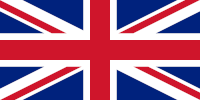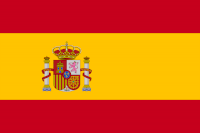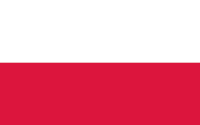Tarot Tales: Unearthing the Secrets Behind the Deck
Welcome, tarot enthusiasts! Today, we are embarking on a journey through time to explore the captivating history of tarot. From its mysterious origins in ancient times to its modern-day popularity, the tarot deck has enchanted countless individuals seeking guidance and insight. So, grab a cup of tea, sit back, and let's delve into the captivating world of tarot!
The Birth of Tarot: Ancient Beginnings
Our tale begins in the mists of ancient history, where the origins of tarot remain shrouded in mystery. While the exact birthplace and time are debated among scholars, it is widely believed that tarot originated somewhere in the Mediterranean region during the 14th century.
One popular theory suggests that tarot cards were initially used as playing cards, gradually evolving into a tool for divination. The first documented mention of tarot as a divinatory practice can be traced back to the 18th century, when French occultist Antoine Court de Gébelin touted the cards as a mystical key to ancient wisdom.
Unlocking the Tarot: Major Arcana and Minor Arcana
To truly understand the essence of tarot, we must first familiarize ourselves with the structure of the deck. The tarot deck consists of 78 cards, divided into two main categories: the Major Arcana and the Minor Arcana.
The Major Arcana, as the name suggests, holds great significance and represents the major themes and archetypal energies in a tarot reading. These cards, numbered from 0 to 21, depict powerful archetypal figures such as The Fool, The Magician, and The High Priestess. Each card in the Major Arcana carries its own unique symbolism and message, providing guidance and insight into the deeper aspects of life and spiritual growth.
On the other hand, the Minor Arcana consists of 56 cards divided into four suits: Wands, Cups, Swords, and Pentacles. Each suit corresponds to a different element and represents different aspects of daily life and human experiences. The Minor Arcana cards, numbered from Ace to Ten, along with the Court Cards (Page, Knight, Queen, and King), offer practical guidance and insights into everyday situations and challenges.
All cards correspond to the planets and signs of the zodiac.
Evolution and Popularity: Tarot Through the Ages
As tarot spread throughout Europe, it underwent various changes and adaptations, taking on different artistic styles and interpretations in different cultures. In the 19th century, a French occultist named Eliphas Levi introduced the concept of correspondences, linking the tarot cards to astrology, numerology, and the Kabbalah. This concept added a deeper layer of meaning to the cards and enhanced their mystical appeal.
Another significant figure in the evolution of tarot was Arthur Edward Waite, a British occultist who commissioned artist Pamela Colman Smith to create a new tarot deck in the early 20th century. This deck, known as the Rider-Waite Tarot, became one of the most popular and influential tarot decks of all time. Waite's deck featured detailed illustrations on each card, with symbolism that closely aligned with the esoteric teachings of the time. The Rider-Waite Tarot deck set the standard for modern tarot decks and greatly impacted the way tarot is interpreted and understood today.
In the 20th century, tarot experienced a resurgence in popularity, particularly in the realm of divination, fortune-telling and horoscopes. Tarot readers and enthusiasts began using the cards as a tool for insight and guidance, tapping into the archetypal energies and symbolism of the deck to gain a deeper understanding of themselves and their lives. Tarot readings became a popular practice at psychic fairs, New Age gatherings, and even in the comfort of one's own home, with many people seeking the wisdom and guidance of the cards.
The Controversies and Misconceptions Surrounding Tarot
Despite its popularity, tarot has not been without its fair share of controversies and misconceptions. Some people view tarot as a form of superstition or devil worship, associating it with dark and occult practices. However, tarot itself is not inherently evil or dangerous. It is simply a tool, a deck of cards that can be used for various purposes, including divination, self-reflection, and personal growth. It is the individual's interpretation and use of the cards that determines whether it is a positive or negative experience.
Another common misconception is that tarot readings predict the future with absolute certainty. In reality, tarot readings are more about exploring possibilities and gaining insight into current situations. The cards can provide guidance and advice, but they cannot predict the future with certainty. The future is constantly changing based on our thoughts, actions, and choices.
There are also controversies surrounding the origins of tarot. While it is widely believed that tarot originated in 15th century Europe, the exact origins are still a matter of debate. Some theories suggest that tarot has ancient Egyptian or even Atlantean origins, while others believe it was inspired by the playing cards of the time. The truth may never be known, but what is certain is that tarot has a rich and fascinating history that continues to captivate people to this day.
Using Tarot for Personal Growth and Insight
For tarot enthusiasts, the true power of the cards lies in their ability to provide insight and guidance for personal growth. Tarot readings can help individuals gain a deeper understanding of themselves, their motivations, and their life paths. The archetypal imagery and symbolism of the tarot deck can serve as a mirror, reflecting back the hidden aspects of our psyche and providing a fresh perspective on our lives.
Many tarot readers use the cards as a tool for self-reflection and self-discovery. By examining the imagery and symbolism of the cards, individuals can uncover patterns, beliefs, and emotions that may be influencing their thoughts and actions. The cards can act as a catalyst for introspection, allowing individuals to explore their innermost desires, fears, and aspirations. Through this process, they can gain clarity and make empowered choices that align with their true selves.
In addition to self-reflection, tarot readings can also provide guidance and support during times of uncertainty or difficult decisions. The cards can offer alternative perspectives and highlight potential outcomes, helping individuals make informed choices and navigate through life's challenges. They can serve as a source of inspiration and encouragement, reminding individuals of their inner strength and resilience.
Tarot can also be a powerful tool for personal growth and transformation. As individuals work with the cards, they may notice patterns or recurring themes that point to areas in their lives that need attention or healing. The tarot can shed light on limiting beliefs, negative patterns, and unresolved emotions, allowing individuals to release what no longer serves them and create space for growth and positive change. Through this process, they can cultivate a deeper sense of self-awareness and self-acceptance, leading to personal transformation and empowerment.
The History of Tarot
The history of tarot is shrouded in mystery and intrigue. While the exact origins are still debated, it is widely accepted that tarot originated in 15th century Europe. The earliest known tarot decks were created for playing games, similar to modern-day playing cards. These early decks featured the four suits of Cups, Swords, wands, and Pentacles, and were often adorned with intricate artwork.
However, it was in the late 18th century that tarot began to be associated with divination and fortune-telling. French occultist Jean-Baptiste Alliette, also known as Etteilla, was one of the first to publish books on tarot card meanings and interpretations. He believed that the cards held secret knowledge and could be used to uncover hidden truths about the past, present, and future.
During the 19th and 20th centuries, interest in tarot continued to grow, particularly in the realm of the occult and esoteric practices. Numerous tarot decks with different artistic styles and interpretations were created during this time. One of the most famous and widely used decks is the aforementioned Rider-Waite-Smith (RWS) deck, created by artist Pamela Colman Smith and published in 1910. This deck features iconic imagery that has become synonymous with tarot, such as the High Priestess, the Fool, and the Death card.
Another highly revered and influential deck within the world of tarot readings is Thoth Tarot deck. Named after the Egyptian god Thoth, who is associated with wisdom and knowledge, this deck was created by the renowned occultist Aleister Crowley and the artist Lady Frieda Harris. The Thoth Tarot deck was first published in 1969 and quickly gained popularity for its unique and intricate artwork, as well as its deep symbolism and esoteric interpretations. This deck incorporates elements of astrology, Kabbalah, and Crowley's own occult teachings, making it a powerful tool for those seeking spiritual insight and guidance. With its rich history and mystical allure, the Thoth Tarot continues to captivate tarot enthusiasts around the world.
It is important to note that while tarot is often associated with divination and fortune-telling, it is also a tool for self-reflection, personal growth, and spiritual exploration. The cards are not inherently magical or predictive, but rather a means for individuals to tap into their own intuition and inner wisdom.
How Tarot Works
So, how does tarot actually work? The answer is both simple and complex. On a surface level, tarot works by using a deck of cards with symbolic imagery and archetypal meanings. The reader or practitioner will shuffle the cards while focusing on a specific question or intention. They will then lay out a spread of cards, usually in a specific pattern, and interpret the cards' meanings based on their position, symbolism, and intuitive guidance.
But on a deeper level, tarot works by tapping into the collective unconscious and the universal wisdom that resides within each individual. The cards act as a mirror, reflecting back the energies, emotions, and experiences that are present in the person's life. They can bring clarity, validation, and guidance to the reader, helping them gain insight into their current situation and potential future paths.
Tarot cards are rich in symbolism, with each card representing different archetypes, elements, and experiences. For example, the High Priestess card represents intuition, mystery, and inner knowing, while the Death card symbolizes transformation, endings, and rebirth. The reader will use their knowledge of these symbols and their intuition to interpret the cards and provide guidance to the querent.
It is important to remember that tarot readings are not set in stone predictions of the future. The future is not fixed, and our actions and choices can influence the outcomes in our lives. Tarot readings can provide potential paths and possibilities, but it is up to the individual to make choices and take action based on the guidance received.
How to Read Tarot Cards
If you're interested in learning how to read tarot cards, you've come to the right place! While tarot reading may seem complex and mysterious, it is actually a skill that can be learned and developed with practice. Here are some steps to get you started:
- Get a Tarot Deck: The first step in learning to read tarot cards is to acquire a tarot deck. There are many different decks available, each with its own unique artwork and symbolism. Choose a deck that resonates with you and that you feel drawn to.
- Familiarize Yourself with the Cards: Take some time to familiarize yourself with the cards in your deck. Look at each card individually and study its imagery, symbolism, and meaning. Pay attention to how the cards make you feel and what thoughts or emotions they evoke.
- Learn the Meanings: Once you're familiar with the cards, start learning their meanings. There are many resources available, such as books, online apps, and tarot communities, that can help you learn the traditional meanings of each card. However, it's important to remember that tarot is a personal and intuitive practice, so feel free to interpret the cards in a way that resonates with you.
- Practice, Practice, Practice: The key to becoming a skilled tarot reader is practice. Start by doing readings for yourself and friends, and gradually expand to reading for others. As you practice, pay attention to the energies and emotions that come up during the readings and how they relate to the cards. This will help you develop your intuition and strengthen your connection to the cards.
- Trust Your Intuition: One of the most important aspects of tarot reading is trusting your intuition. While it's helpful to know the traditional meanings of the cards, it's equally important to listen to your inner voice and allow it to guide you in interpreting the cards. Your intuition will often provide insights and messages that may not be found in any book or guide.
- Develop Your Own Tarot Ritual: To enhance your tarot reading experience, consider developing your own tarot ritual. This can include things like cleansing and consecrating your deck, setting intentions before a reading, and creating a sacred space to conduct your readings. A ritual can help you enter a focused and receptive state of mind, making your readings more powerful and meaningful.
Embrace the Magic of Tarot and Discover Your Inner Wisdom
In conclusion, the history of tarot is a tapestry woven with threads of mystery, symbolism, and divination. It has evolved from a simple card game to a powerful tool for self-reflection, guidance, and spiritual exploration. Throughout the centuries, tarot has remained a beloved and cherished practice, captivating the imagination of people across cultures and generations.
As tarot enthusiasts, we are fortunate to have access to a wealth of knowledge and resources that can help us deepen our understanding of these mystical cards. By studying the history, symbolism, and meanings of the cards, we can unlock the secrets they hold and tap into our own intuition and wisdom.
Remember, tarot is not just about predicting the future or seeking quick answers. It is a journey of self-discovery, self-reflection, and personal growth. Each card is a mirror that reflects our innermost thoughts, fears, hopes, and desires. Through tarot, we can gain insight, clarity, and guidance to navigate the twists and turns of certain aspects of life: love, career, spiritual development, health, etc.
So, whether you are a seasoned tarot reader or just starting out on this enchanting path, embrace the magic and wonder of tarot. Let the cards be your companions as you explore the depths of your soul and unlock the mysteries of the universe. Trust your intuition, follow your heart, and let the tarot guide you on your journey.
May the cards always be in your favor, and may the wisdom of tarot illuminate your path. Happy readings!







